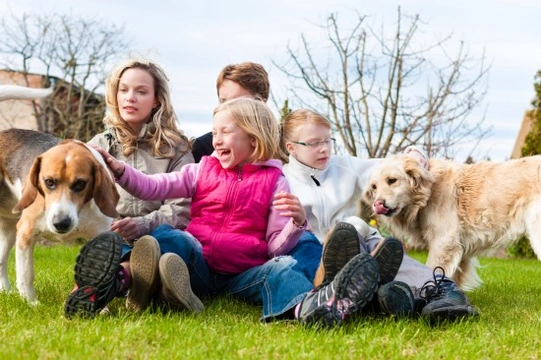
Dogs and families - Some safety tips to remember
Introducing your children to the responsibilities and perks of pet ownership from a young age and fostering in your children a lifelong love of and respect for our canine companions are just some of the benefits that can accompany having a family dog. A family dog can be your child’s best friend, greatest advocate and most important teacher, and there is no denying the fact that growing up with a dog around helps to develop a whole host of skills and positive traits in the child.
However, it is vitally important to make sure that dog ownership is a positive experience for your children, as negative experiences with dogs when young can be very formative, and go on to have an impact on how your child views dogs for the remainder of their lives. Added to this, there are of course safety considerations to bear in mind in order to protect your child and ensure that your dog never hurts them deliberately or inadvertently, something that all parents should pay close attention to. In this article, we will cover the most important aspects to consider regarding dogs, families and safety.
Choosing the right dog
Picking the right dog for a family environment is vital, as not all dogs are amenable to the presence of children, depending on their age and personality. You should always select your dog for their personality and tolerance of children and ensure that the dog is laid back and not prone to snapping or aggression, even when teased or hassled by your children. Obviously you will need to work on ensuring that your child respects your dog and does not harass them or incite them to aggression or snapping, but it is important to pick a dog that will tolerate mistakes along the way, for the safety of your child.
Training the dog
Good training is the key to canine obedience, and ensuring that your dog is controlled, manageable and well behaved. This is especially true when your dog will spend a lot of time around children, and you should incorporate your children into your dog training and management regime in order to provide clear and unambiguous boundaries for your dog as to what is and is not ok.
Training the children
Just as important as training the dog is training the child or children that will live with the dog too! You should never leave children who are too young to understand appropriate behaviour with dogs alone with your dog, and as soon as your child is old enough, begin to teach them about how to handle and speak to your dog, how to read their body language, and how to respect your dog’s need for space and consideration.
Supervision
Ensure that younger children are supervised around dogs at all times, and if your older children have friends over, that they are monitored around your dog as well, even if they have dogs of their own at home. Never leave your dog unattended around babies or toddlers, and watch your children’s interactions with your dog carefully. Even when your child is old and experienced enough to spend time with your dog alone, take stock of the situation now and then and ensure that the behaviour of both child and dog is safe and appropriate.
Quiet zones
Make sure that your dog has his own personal space, such as a room or a bed that he can use for time outs when he does not wish to play or be bothered. Make sure that your children know about this and respect it, and learn that when your dog retreats to his quiet zone, he is to be left alone. Similarly, make sure that at least one area of the home is out of bounds to your dog but open to your child, so that they can have some dog-free space if they wish to as well.
Ground rules
Ground rules for both dog and child are important, over and above the general process of training the dog and the child about how to behave around each other. Your dog should understand that the little people are part of their pack but not to be bossed around (or herded, in the case of some dogs!) and that the kids aren’t fair game for getting their own way or begging for food from when the adults say no. Similarly, ensure that your child doesn’t blur the boundaries for your dog and sabotage your training by allowing or encouraging your dog to do something that they are not allowed to, for instance, getting onto the furniture or going into rooms they are not permitted to use, or feeding treats ad hoc.
Dogs should not be allowed to sleep on children’s beds, and you should also teach your children as soon as they are old enough about good hygiene around dogs, such as not allowing the dog to lick their face, and how and when to wash their hands after handling your dog. While considerations of safety around dogs for parents usually refer to physical interactions and ensuring that your child does not get hurt or bitten, it is important not to overlook the health and hygiene considerations of dog ownership for children either!



